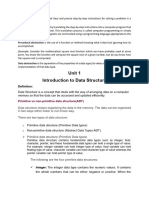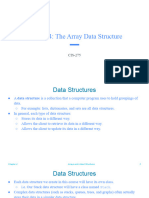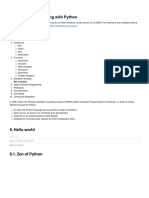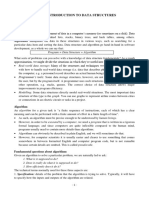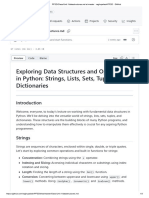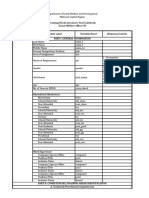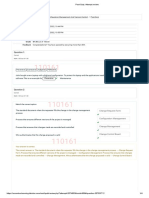0% found this document useful (0 votes)
24 views99 pagesDSP-Unit 1
The document discusses various data structures and algorithms concepts including data types, data structures, abstract data types, abstractions, iterators, arrays, lists, bags, and trees. It provides examples and definitions of built-in and user-defined data types in Python including lists, tuples, dictionaries, sets, stacks, queues, trees, and graphs. It also discusses abstract data type operations and examples like the Date ADT. Key algorithms concepts explained include data abstraction, procedural abstraction, iterators, and how lists expand their underlying array when new items are appended.
Uploaded by
Computer ScienceCopyright
© © All Rights Reserved
We take content rights seriously. If you suspect this is your content, claim it here.
Available Formats
Download as PDF, TXT or read online on Scribd
0% found this document useful (0 votes)
24 views99 pagesDSP-Unit 1
The document discusses various data structures and algorithms concepts including data types, data structures, abstract data types, abstractions, iterators, arrays, lists, bags, and trees. It provides examples and definitions of built-in and user-defined data types in Python including lists, tuples, dictionaries, sets, stacks, queues, trees, and graphs. It also discusses abstract data type operations and examples like the Date ADT. Key algorithms concepts explained include data abstraction, procedural abstraction, iterators, and how lists expand their underlying array when new items are appended.
Uploaded by
Computer ScienceCopyright
© © All Rights Reserved
We take content rights seriously. If you suspect this is your content, claim it here.
Available Formats
Download as PDF, TXT or read online on Scribd
/ 99









